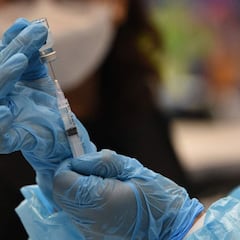Who discovered the Omicron variant?
The variant has sent countries scrambling to close borders with the nations that reported it, but it may have been identified earlier than first thought.


Experts have been saying all year that the longer the world remains unvaccinated, the risk of further variants being created increases. Now, the world is bracing for a new variant, perhaps generated from a continent with just two percent of people fully vaccinated, that may evade vaccines and be more transmissible, Omicron.
If people think the pandemic was over, more hurdles await.
Related news:
- Omicron: global tracking of new covid-19 variant
- How many Covid-19 variants have been there besides Omicron?
- Why did WHO skip letter Xi and name Omicron the new covid variant?
- Where has Omicron been confirmed and which countries have implemented travel bans?
Where is the Omicron variant from?
While it cannot yet be determined where the variant was formed, it was first identified by South African scientists on November 24. They immediately informed the World Health Organization, which resulted in the mass ban of flights from the south of the continent.
Junior Lancet scientist Alicia Vermeulen was credited with making the initial find on the afternoon of November 4, when she noticed a change in a single positive test and told her manager, according to News24, a South African news website.
Canada is expanding its travel ban to include Nigeria, Malawi and Egypt. (After previously imposing bans on southern African countries.)
— Geoffrey York (@geoffreyyork) November 30, 2021
Interestingly, there are far more confirmed cases of Omicron in European countries than in Nigeria, Malawi or Egypt. But they're not banned.
New evidence has emerged of the variant being detected earlier in the Netherlands than first thought. The RIVM health institute said it found Omicron in samples dating from November 19 and 23 in the European nation, casting doubt on the usefulness of flight bans. The new strain has been sequenced in most European countries.
The US detected its first Omicron case on December 1.
How did the virus mutate so much?
The more a virus is let loose in a population, the greater chance it has to mutate. With populations in places like Western Europe having a very high full vaccination rate, the amount of reproductions of the virus are low. However, if kept unchecked, the rapid prevalence of the virus means there could be a mutation.
"This is probably the most mutated virus we'd ever seen," said virologist Alex Sigal, who is leading the team of researchers that first identified the new variant.
For months, medical experts warned that leaving large areas of the world unvaccinated would make new variants inevitable – but for Big Pharma, profits come before public health.https://t.co/9IBVIKnOEi
— Tribune (@tribunemagazine) December 1, 2021
Related stories
For example, South Africa has 42.7 percent of people fully vaccinated, compared to Spain's rate of more than 80 percent. This isn't for want of trying, vaccines are difficult to get for poorer nations due to price gouging by pharmaceutical companies and the lack of intellectual property waivers for the vaccines themselves. Poor nations can't produce the vaccines themselves, and are having to suffer for it.
With the new variant from a poorer nation now coming back to bite in the West, it seems as if it is merely nations like the US and UK going to sleep in a bed they made themselves.

